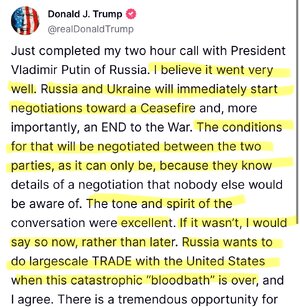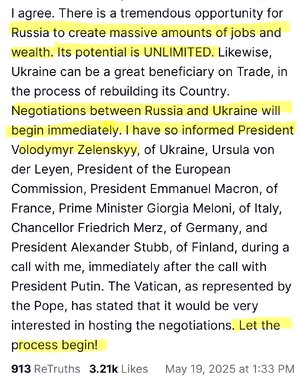Just curious. Why is it a priority for the United States to end the war? We're not spending any money on it now, and if you count what we gave before we have clearly gotten a fantastic return on our money by a major enemy being severely weakened which frees us up to tackle other enemies elsewhere.
And if we work it right, we can clearly get our money back from frozen assets or even repatriations which is clearly warranted.
Ending the bloodshed of course, but I highly, highly doubt that reason motivates Trump at all.
EDIT NOTE: I'm a little confused. Even though I didn't quote the poster, I thought there was a post asking NYCFAN a just curious question. Which is what I thought I was dovetailing. Did he erase his post or did I dream it up somehow if anyone knows?



